Gregory A. Fournier's Blog, page 9
December 23, 2020
Medical Marijuana and My Friend Peter McWilliams
 Peter and I went to Allen Park High School together in the mid-1960's. He was a bright and precocious student but was considered by many to be a weird nerd. Like many nerds before or since, Peter was grossly underestimated by most of his high school peers. Peter came into his own during his college days at Eastern Michigan University and began a successful career as an author. The story of his death is emblematic of the senseless and inhumane war on marijuana waged by a misguided legal system. In his case, the law killed him. The following article ran in Liberty magazine, written by a staff writer.
Peter and I went to Allen Park High School together in the mid-1960's. He was a bright and precocious student but was considered by many to be a weird nerd. Like many nerds before or since, Peter was grossly underestimated by most of his high school peers. Peter came into his own during his college days at Eastern Michigan University and began a successful career as an author. The story of his death is emblematic of the senseless and inhumane war on marijuana waged by a misguided legal system. In his case, the law killed him. The following article ran in Liberty magazine, written by a staff writer.
 1950-2000 THE LIFE AND DEATH OF PETER MCWILLIAMS
1950-2000 THE LIFE AND DEATH OF PETER MCWILLIAMS Another Casualty Of The War On Drugs
On June 14, Natalie Fisher went to Peter McWilliams' home, where she worked as housekeeper to the wheelchair-bound victim of AIDS and cancer. In the bathroom on the second floor, she found his life-less body. He had choked to death on his own vomit.
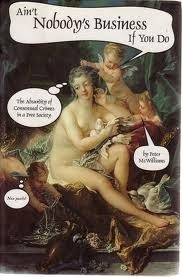 As regular readers of Liberty know, Peter, a world famous author* and a regular contributor to these pages, was diagnosed with AIDS and non-Hodgkins lymphoma in early 1996. Like many people stricken with AIDS or cancer, he had great difficulty keeping down the drugs that controlled or mitigated those afflictions. He began to smoke marijuana to control the drug-induced nausea. It saved his life: by early 1998, both his cancer and his AIDS were under control.
As regular readers of Liberty know, Peter, a world famous author* and a regular contributor to these pages, was diagnosed with AIDS and non-Hodgkins lymphoma in early 1996. Like many people stricken with AIDS or cancer, he had great difficulty keeping down the drugs that controlled or mitigated those afflictions. He began to smoke marijuana to control the drug-induced nausea. It saved his life: by early 1998, both his cancer and his AIDS were under control. In 1996, California voters enacted a law legalizing the use of marijuana by people like Peter, who needed it for medical reasons. Peter was an enthusiastic supporter of the new law, both because he believed in maximizing human liberty and because marijuana had saved his life and was, indeed, keeping him alive.
But Peter was more than an advocate. After the Clinton administration announced it would ignore the state law and continue to prosecute marijuana users who needed the drug to stay alive, it remained very difficult for others who needed medical marijuana to get the drug. So Peter helped finance the efforts of Todd McCormick to cultivate marijuana for distribution to those who needed it for medical reasons.
His articulate advocacy for legalizing medical marijuana brought him to the attention of federal authorities, who got wind of Todd McCormick's attempt to grow marijuana for medicinal purposes and of Peter's involvement with it. And it came to pass that in the early morning of December 17, 1997, federal agents invaded his home and business, and confiscated a wide array of his property
(including his computers, one of whose hard disks contained the book he was writing). In July 1998 they arrested him on charges of conspiring to grow marijuana.
His mother and brother put up their homes as bond and he was released from jail to await his trial. One of the conditions of his bail was that he smoke no marijuana. Unwilling to risk the homes of his mother and brother, he obeyed the order. His viral load, which had fallen to undetectable levels, now soared to dangerous levels:
"Unable to keep down the life-saving prescription medications, by November 1998, four months after my arrest, my viral load soared to more than 256,000. In 1996 when my viral load was only 12,500, I had already developed an AIDS-related cancer .... Even so, the government would not yield. It continued to urine test me. If marijuana were found in my system, my mother and brother would lose their homes and I would be returned to prison" said Peter.
Peter's health wasn't all that was ruined. Unable to work because of the disease and facing mounting legal bills, he was forced into bankruptcy. But he didn't give up: he experimented with various regimens and eventually managed to keep his medication down for as long as an hour and a quarter, long enough for some of the medication to work its way into his system. But the process had weakened him to the point where he was wheelchair-bound.
His publishing venture destroyed and his assets gone, Peter focused on his upcoming trial. He relished the chance to defend himself in court: medical marijuana was legal under state law and he believed a spirited defense could both exonerate him and help establish a legal fight to grow marijuana for medical purposes.
Last November, news came that would have crushed a lesser man: the judge in the case ruled that Peter could not present to the jury any information about his illness, the fact that the government's own research concludes that marijuana is virtually the only way to treat the illness, or that using marijuana for medical purposes was legal in California.
Unable to defend himself against the government's charges, Peter concluded that he had no choice but to plea bargain. He agreed to plead guilty, in hopes that any incarceration could be served under house arrest, since sending him to prison, where he would not be able to follow his lifesaving regimen, would be tantamount to sentencing him to death.
On June 11, there was a fire in his home, which destroyed the letters to the judge that he had acquired and the computer containing the book he was writing on his ordeal. Three days later, he died, apparently as a result of his inability to keep his medication down.
When I heard that Peter had died I was grief-stricken. I'd known him only for a couple of years, but that was more than enough for me to come to respect and love him. I became acquainted with him shortly after the drug police raided his home, the first in the series of calamities that befell him.
Three things about Peter were truly amazing.
Despite the government's persecution, which resulted in the loss of virtually all his property, his freedom, and ultimately his life, he never descended into hatred. Time and time again, he cautioned friends against falling victim to hate or giving in to the desire for revenge. "My enemy is ignorance," he'd say, "not individuals."
I was also astonished by his ability to focus on the future and not get depressed about the calamities that befell him. I spoke to him dozens, perhaps hundreds, of times during his ordeal, and I do not recall a single time when he even remotely sounded down or acted as if he were seeking my sympathy.
The third astonishing thing about Peter was his remarkable generosity of spirit. He always offered help and encouragement to others, no matter what his own circumstances were. A few months ago, I was contacted by a publisher with a request to reprint an article of Peter's that had appeared in Liberty. The publisher was one of the few who routinely is willing to pay for reprint rights, so I called Peter with the good news, and asked him how much he'd like me to ask for his article. "Nothing," he said. "I want to encourage people to reprint my writing on the drug war." I reiterated that this publisher happily paid $100 to $200 for reprint rights, that it was very prosperous and that he could use the money. (By this time, Peter was so broke that he was asking friends to use his website as a portal to various shopping websites so that he would receive the small commissions that they offer.) But Peter would have none of it. "We are in a war of ideas," he said. "And I want my writing to have the widest possible effect."
I must admit that when I learned the tragic news of Peter's death, my spirit was not so generous as his. I thought about the judge who had denied him his day in court and had ordered him to forgo the medication that kept him alive. I suppose he's happy, I said to myself, now that he's murdered Peter.
I'm one of those libertarians who generally tries to look at government policies more as folly than as evil. But sometimes, the evil that government does transcends simple folly. Sometimes I have to be reminded that there is a real human cost of government. It happened when I learned of the government's killing of 86 people at Waco and its murder of Vicki Weaver at Ruby Ridge. And it happened with Peter, too.
Peter never wanted to be a martyr. But he wanted to live in a free country, where people respected each others rights and choices, and he did what he thought was best to keep himself alive and to advance the cause of liberty. He was one of the most joyous people I've ever known, a hero in every sense of the word.
So rather than belabor his tragic death, Liberty will celebrate his life by publishing for the first time the full text of his address to the Libertarian Party National Convention in 1998. It's vintage Peter McWilliams: funny, wise, charming, intelligent, full of piss and vinegar.
I invite you to read and enjoy it -- and join with other people of good will in celebrating the life of this good, kind, decent, generous, and brilliant man.

* He wrote several best-sellers, including some of the first books about using microcomputers, "How to Survive the Loss of Love" ( which sold more than four million copies, several books of poetry ( with total sales of nearly four million ), and "Ain't Nobody's Business If You Do", a brilliant analysis of consensual "crimes." MAP posted-by: Doc-Hawk
See William F. Buckley's take on Peter's death in part two of this tragedy.
December 16, 2020
The Elusive Purple Gang videocast
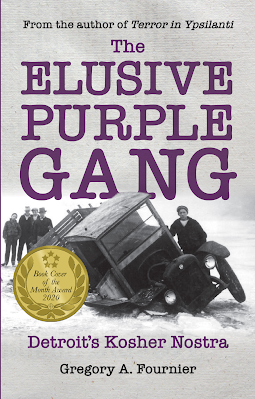
In October 30th, 2020, I was interviewed about my true crime book The Elusive Purple Gang: Detroit's Kosher Nostra by D.A. Kulczyk and Phil D'Asaro for their Cities of Blood videocast. This title is available in a quality paperback, ebook, or audio format. Makes a great holiday gift.
December 11, 2020
Edythe Fern Melrose--The Lady of Charm
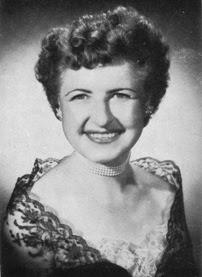 The Lady of Charm
The Lady of CharmEdythe Fern Melrose was born in rural Illinois in 1899, but she was raised on a farm in West Mansfield, Ohio. She grew up a farmer's daughter doing chores like milking cows and gathering eggs. "My parents had four daughters and we all did boy's work and household chores." Edythe went to a little country school until her father moved the family to Chicago, so his daughters could get a better education.
At first, Edythe was insecure about being a "country hick" or a "hayseed" at the Bush Conservatory of Music and Performing Arts. To avoid being labeled a "dunce," she became an overachiever and pushed herself to get the highest grades in her class. She learned about charm, personality, diction, poise, and proper speech habits--the standard expectations for young, educated women of that era. Unbeknowst to Edythe, these traits became the focus of her future career.
She graduated with honors from the Bush Conservatory and entered Columbia College in Chicago--a private, nonprofit college specializing in visual and performing arts, liberal arts, and business degrees. There, she graduated from the "School of Media Arts" where she learned about radio broadcasting and business management.
In 1929, Edythe became one of the first women in America to manage a radio station--WJAY in Cleveland. From 1933 until 1941, she emceed her own women's program which was popular locally. Edythe moved her program in 1941 to WXYZ-Radio in Detroit and renamed it "The Lady of Charm." By 1943, she created House of Charm Radio Productions and syndicated her program throughout Michigan, building her Lady of Charm brand. She had a pleasant radio voice, an infectious chuckle, and a wealth of common sense for women that she would sprinkle throughout her program. Her tag line was "A women's charm depends on the way she looks and the way she cooks."
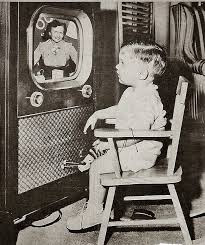 Early television pioneers.
Early television pioneers.Edythe's public image was motherhood and apple pie, but behind the scenes, she was a consummate business woman active in Detroit's professional business organizations. As the Lady of Charm, Edythe Fern Melrose was a much sought-after speaker in the Detroit area. Seven years later, she made the leap to television and became a television pioneer. Her program on WXYZ-TV Channel 7 ran from 1948 until 1960. She was always fashionably dressed and looked like she just left the beauty parlor.
Edythe was one of the first television personalities to utilize product placement, and she doubled-down by shrewdly mentioning the brand names of the appliances used on her studio set which endeared her to sponsors like Frigidaire, Hotpoint, and General Electric.
Her recommendations were much sought-after by advertisers. She had a fully-functional replica of her home kitchen constructed in the studio at the Maccabees Building and later at WXYZ's Broadcast House in Southfield. Every year, kitchen appliance styles would change, and the Lady of Charm got whatever she asked for free of charge. Her studio kitchen always had the latest appliances and was an advertisement in itself.
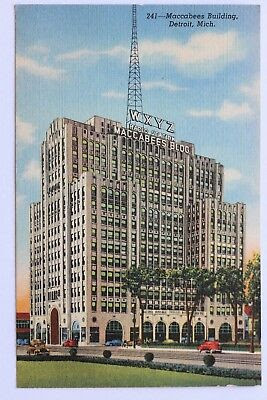
When Edythe did a cooking segment, everything was premeasured for her to save precious air-time. Every dish was prepared in two stages: one with ingredients for preparation on-air to be shoved in the oven and another already baked to take out of the oven. She would choose an invited guest or someone from the station to sit down at the end of her show and share the dish while seated at a tablecloth-covered, fully decked-out table with silverware and crystal service. After taping her show, Edythe's assistant finished cooking or baking the extra dish for Edyth's camera crew. Soupy Sales remembered, "We were the best-fed station in town."
WXYZ did not renew Edythe's contract in 1960 after twelve years on Detroit television. She revived her production company producing commercials and syndicated segments titled "The Charm Kitchen" and "House of Fashion" for other Detroit stations including CKLW in Windsor, Ontario. In addition to producing and appearing in ads, she wrote advertising copy for her high-dollar, corporate clientele. To produce her segments, she rented studio time and production facilities from WXYZ Broadcast House in Southfield.
During a studio taping for the Pontiac Motor Car Company on February 27, 1968, one of the station's directors asked Edythe to go backstage and attach a microphone to her bra. It was dark behind the curtain where she tripped over a cable and severely twisted her leg dislocating her knee. She was rushed to the hospital for surgery where her knee cap was removed confining her to a wheelchair for the rest of her life.
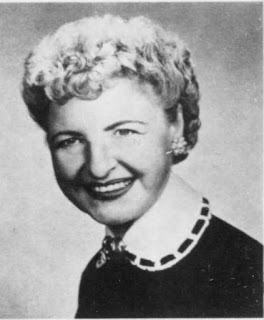 She and her husband (Forest Webster) filed a lawsuit charging WXYZ with neglect for not providing a proper passageway backstage for her. The station dragged the lawsuit through two appeals taking eight years to work through the Macomb County Court and the Michigan Court of Appeals.
She and her husband (Forest Webster) filed a lawsuit charging WXYZ with neglect for not providing a proper passageway backstage for her. The station dragged the lawsuit through two appeals taking eight years to work through the Macomb County Court and the Michigan Court of Appeals.
Just fifteen days after she and her husband were awarded a settlement of $952,000 for damages including back interest, Edythe Fern (Melrose) Webster died at the age of seventy-seven at her home on May 19, 1976. Services were held in Grosse Point Woods at A.H. Peters Funeral Home, and she was buried in Grayling, Michigan.
Edythe was a product of her times as much as a trendsetter for women of her day. Her friends and colleagues remembered Edythe as active in public affairs and concerned about her television viewers. Longtime friend Diane Edgecomb told The Detroit Free Press that "Edythe was a classic, a real television pioneer. She was a genteel women's libber all her life." Business associate and friend Marion Ryan said, "Edythe had a very charming personality and a nice way of putting people at ease. She will be missed."
December 10, 2020
TERROR IN YPSILANTI Podcast -Gregory A. Fournier From: True Murder: The Most Shocking Killers
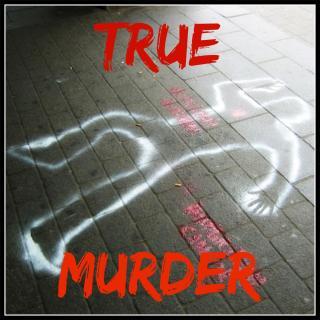 TERROR IN YPSILANTI-Gregory A. Fournier From: True Murder: The Most Shocking Killers
TERROR IN YPSILANTI-Gregory A. Fournier From: True Murder: The Most Shocking Killers True crime podcast recorded on December 9, 2020 on the John Norman Collins murders from July 1967 through August 1969 in Ypsilanti, Michigan.
 Available in paperback, all ebook formats, and an audio.
Available in paperback, all ebook formats, and an audio.An eight-part miniseries is being developed by a Canadian media company for possible production in the next few years. First, a "proof of concept" pilot must be shopped around and then picked up by a production company. I'm confident this project will become a reality in the next couple of years. Stay tuned.
Terror In Ypsilanti: John Norman Collins Unmasked podcast (90 minutes)
December 6, 2020
Sir Graves Ghastly's Rise and Fall
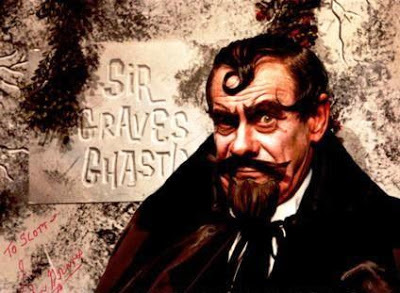
Lawson Deming was a graduate of Western Reserve University who studied speech, drama, and math. "Deming began performing professionally when he worked in vaudeville," said Sonny Eliot, Lawson's friend. A lifelong Cleveland, Ohio resident, Deming landed a radio job at WHK in 1932 where he met his wife Rita, who was a hostess of a women's talk show. "The greatest fun was radio," Deming said in a 1982 Detroit Free Press interview, "because we were creating something in somebody's mind with voices, dialogue, music, and sound effects. We created a whole world."
In 1949, Deming switched over to Cleveland television station WTAM where he met co-worker Bill Kennedy early in their television careers and became good friends. Deming hosted a movie show called One O'Clock Playhouse. He also worked as a puppeteer on a program entitled Woodrow the Woodsman. Although his face never appeared on-screen, he supplied the voices for characters named Freddy Gezundheit, the alley crock; Tarkington Whom II, the owl; and Voracious, the elephant. His work on Woodrow the Woodman brought Deming to Detroit in 1966 when the show was moved to WJBK for taping.
Soon after arriving at WJBK, Deming was approached by program producer and director Jay Frommert about playing the character Ghoulardi and showing horror movies. But Ghoulardi was already being done in Cleveland by Ernie Anderson. Deming suggested he be allowed to create his own character. On Saturday, January 22, 1967, Sir Graves Ghastly rose from the grave on the premise that "Sir Graves was hanged 400 years ago by Queen Elizabeth, but like a bad vaccination, it didn't take."
The shadow-eyed, hair plastered down, goateed Sir Graves began his show by opening a creaky casket from within, which was located on a graveyeard set. For the next two hours, the red-gloved, black-capped, comic vampire cracked bad jokes while riffing on the B-grade horror movies he showed between commercial breaks. To complete his Dracula parody, Sir Graves had an infectious laugh, "Nyeeea aaaa haa haaaaa" and he was prone to "hippyisms" in his speech.
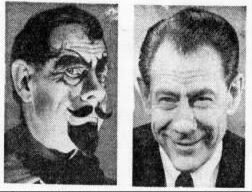 Sir Graves and his alter-ego Lawson Deming
Sir Graves and his alter-ego Lawson DemingWeekly segments on Sir Graves program were the scrolling of children's names celebrating their birthdays, and the "Art Ghoulery" where kids sent in their drawings of Sir Graves, vampires, and werewolves, hoping Sir Graves would feature them on his show.
Deming created a cast of characters all portrayed by him and edited onto the master tape, so Sir Graves could interact with them. The cast included Reel McCoy, a character who digs up old B-movie horror films; Tilly Trollhouse, wildly off-key, blonde singer; the Glob, an extreme closeup of Deming's mouth upside down, lip-syncing songs; Cool Ghoul, an over-the-hill motorcycle freak; and Walter, Sir Grave's prissy alter ego who keeps telling him, "You're sick, sick, sick!"
Unlike earlier WXYZ horror movie host Dr. X on Shock Theater, Sir Graves wasn't meant to scare anybody. Deming worked from a rough outline and adlibbed his way through the show, often spouting bad jokes sent in by viewers. The show was a mixture of cheesy horror movies and corny humor.
Viewers, half of whom were males over eighteen-years-old, were almost afraid to laugh at some of Sir Graves' groaners but couldn't help themselves like: "What did the Frankenstein monster say after he ate a six-cylinder engine?" What? "I could've had a V8."
Deming continued to live in Cleveland and took charter flights to Detroit twice a month on Wednesdays until January 1970. When he missed his flight one day, the plane crashed through the Lake Erie ice killing all aboard. After that, Deming and his wife agreed that taking the three-hour, midnight bus ride was a safer option.
In true vampire fashion, he arrived at WJBK before the break of dawn and read fan mail before preparing for taping from 9 am until 11 am for the Saturday show. Then, he taped nine additional segments to be fitted into two movies between commercial breaks, before he took the 4:00 pm bus back to Cleveland. Deming worked two twelve hour days a month producing four programs.
The high point of Sir Graves' career may have been when he emceed Detroit's American Cancer Society benefit called "Black Cat Caper," a pre-halloween costume ball at Cobo Hall on Friday, October 13, 1972. Sir Graves made a grand entrance at 9:15 pm in a coffin carried by Detroit media pallbearers Bob Allison, J.P. McCarthy, Dick Purtan, Bob Talbert, Jac Le Goff, and John Kelly. Tickets cost $13.13. The grand prize for best costume was an eight-day trip to London for two, with a three-day stay at a 500-year-old, haunted abode in a village named Pluckley.
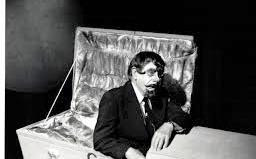
In April of 1983 after sixteen years of faithful service, Lawson Deming was handed his walking papers by WJBK's general manager Bill Flynn. "I never could figure out why he dumped me. We had the highest-rated Saturday show in our market, and it was a money-maker for them." But it was too late for Sir Graves. By this time, Elvira, Mistress of the Dark, ran off with his male audience.
Deming retired in Cleveland and lived for another twenty-four years before he left this vale of tears on April 27, 2007 at the age of ninety-four. His spirit can rest easy knowing the joy he gave to his television viewers. Many a Detroit Baby Boomer will shed a tear in memory of Lawson Deming's Sir Graves Ghastly character. David Deming's eulogy at his father's funeral service attributed the longevity of his father's career to "his warm spirit and genuine love of kids."
December 4, 2020
Cities of Blood Terror In Ypsilanti Videocast

On November 29, 2020, I spoke with D.A. Kulczyk and Phil D'Asaro about my true crime account of the John Norman Collins murders in Ypsilanti, Michigan between July 1967 and August 1969. Makes a good holiday gift for the true crime lover in your life.
November 30, 2020
Rita Bell's Prize Movie
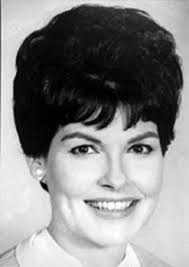 One ot the most beloved ladies in Detroit television history was Rita Bell Connolly, a graduate of Marygrove College with a business degree in public relations. Rita landed a job with the Detroit chapter of the United Way in the mid-1950s and sat on the boards of many non-profit service organizations around town. She was a member of the Women's Advertising Club and a much sought-after speaker.
One ot the most beloved ladies in Detroit television history was Rita Bell Connolly, a graduate of Marygrove College with a business degree in public relations. Rita landed a job with the Detroit chapter of the United Way in the mid-1950s and sat on the boards of many non-profit service organizations around town. She was a member of the Women's Advertising Club and a much sought-after speaker.While singing at a Wrigley's corporate event, a WXYZ-TV executive was struck by Rita's presence and personality--not to mention her wholesome beauty. He asked Rita if she might be interested in working on local television. Once she determined that the offer was legitimate and not a come-on from a corporate Lothario, she recognized what an opportunity it was and agreed to give it a try.
On Monday, April 29, 1957, Rita made her television debut on Lou Gordon's Midnight News Hour with a short segment at 12:15 am called Forecasts and Fashions where she gave the next day's weather report and some fashion news. Rita made history by becoming Detroit's first woman weather forecaster. It wasn't prime time, but Rita proved she had screen presence and was confident appearing on camera.
On the advice of the station manager, Rita dropped her maiden name and became known as Rita Bell, which had a distinct ring to it. The following year, Rita landed a better time slot and did local, state, and national weather at 7:10 pm.
WXYZ programmers noted from their market research and Rita's fan mail that she drew in viewers. Then on December 12, 1960, Rita landed a program that would become her life's work called Prize Playhouse from 8:30 am to 10:00 am. As her morning audience grew, the program was rebranded Rita Bell's Prize Movie.
Rita showed classic movies and during commercial breaks, she took calls from viewers. Everyday she would play a mystery tune, and if callers correctly guessed its name, they would get a cash prize of seven dollars. If the tune wasn't guessed, seven dollars was added to the prize total. WXYZ broadcast over Channel 7--hence seven dollars.
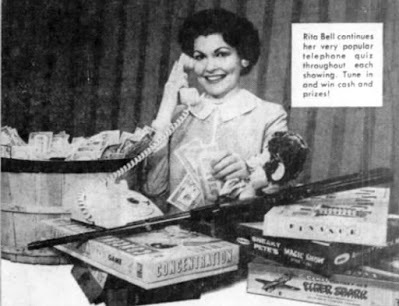
Rita Bell became the darling of Detroit daytime television, known for her sunny disposition, bright-eyed smile, and pleasant voice. She was genuine and charming. Her studio set was simply a huge, telephone dial prop hanging on the wall behind her and a table with a working telephone on it. Rita's hairstyle changed with the season as often as the telephones she used. The Prize Movie theme song was Al Hirt's catchy Cotton Candy.
In the spring of 1971, Rita and her husband Jerome F. Hansen took a well-earned, three-day vacation. Detroit Free Press feature columnist Shirley Eder filled in for her. The mystery tune had run for four months, but nobody knew the tune's name and viewers were grumbling. The cash prize reached $4,529. On April 23, 1971, Eder's first caller, Mrs. Shirley Gurich answered, "Pioneer of the Stars." After that, the show's producers started giving away products donated by local sponsors for on-air plugs.
In 1977, Rita lost her Prize Movie program with scheduling pressure from above and below. The ABC network began producing Good Morning America to compete with NBC's Today Show from 7:00 am to 10:00 am, and when WXYZ introduced Kelly & Company with popular newscaster John Kelly and his wife Marilyn Turner at 10:00 am, their show became the talk of the town and the most popular daytime talk show in Detroit television history. Rita was relegated to doing movie reviews and interviewing celebrities when they came to town to perform at the Fisher Theater or some other Detroit venue. Her career was clearly going backwards.

On June 1, 1978, WXYZ declined to renew Rita Bell 's contract after twenty-one years of dedicated service. A spokesperson for the station said, "Letting Rita go was a hard decision. There simply wasn't enough for her to do." Rita told a colleague that she expected to be released, "But it was still a gut-wrenching feeling."
Many a Detroit area kid has fond memories of staying home from school on snow days, sick days, and vacation days snuggling on the couch watching Rita Bell's Prize Movie in the sixties and seventies, but America's entertainment and viewing habits had changed and much of Rita's core audience outgrew her program. If you can measure a person's value by the esteem others hold for them, Rita remains one of the most admired women in Detroit television history.
After the morning talk show craze hit, Rita retired to Poway, California with her husband, a Detroit Free Press reporter. She succumbed to colon cancer on December 9, 2003 at the age of seventy-eight. Rita's ashes are inurned at Fort Rosecrans National Cemetery in Point Loma, California next to her husband, overlooking San Diego Bay and the mountains beyond.
November 25, 2020
West Dearborn's Muirhead's Department Store
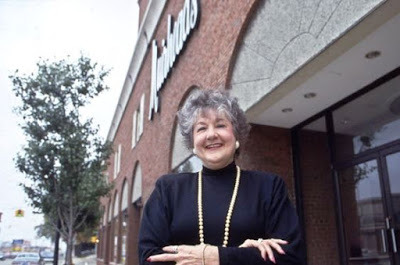 Mrs. Alberta Muirhead
Mrs. Alberta Muirhead
If you grew up in Downriver, Detroit in the 1950s or 1960s, after the Hudson's Thanksgiving Day parade on Woodward Avenue, you had your heart set on a visit to Santa's igloo at Muirhead's on Michigan Avenue in West Dearborn. Baby Boomers have precious memories of riding along on rails in Santa's sleigh with their parents and siblings to get their photo taken with Santa Claus. Over the years, several men have donned the red suit and white beard. Early on, Mr. Muirhead played the role, but succeeding Santas were Bob Oxley and Tim Pryce. There may have been others.
In 1946, John Muirhead married Alberta (Jamieson?), and they opened a neighborhood department store featuring women's clothing and a toy department. Dearborn resident Jon Jahr explained that his father drew up the blueprints for the original Muirhead's building which was on three levels.
"The basement was the storeroom, shopping was on the street level, and the Muirheads lived on the second level. As their business grew, they expanded the footprint of the building, and in the early sixties, they built a new building around the old building, replacing the street facade for a modern, upscale look." By then, John and Alberta lived in their own home, creating more sales space on the second level.
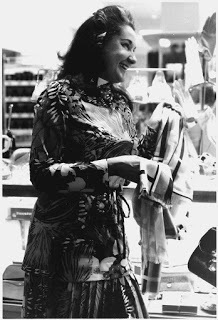 Mrs. Muirhead - 1971
Mrs. Muirhead - 1971
Lynn Richards Tobin worked at Muirhead's in 1961 and 1962. She remembers, "Mr. Muirhead was in his early sixties. Mrs. Muirhead was younger, maybe in her forties.... She always wore the cash register key around her neck. She took care of their customers and oversaw sales on the main floor. Mr. Muirhead spent most of his time on the second floor in the stockroom and oversaw employees to make sure everyone was working and not goofing off.
"The main floor was girls and teen clothing in front and children's clothing in the back. A customer service center was in the middle of the sales floor where shoppers could take returns and ask questions. There was a cash register station near the front door and one near the parking lot exit in back. An elevator and a stairwell led to the second floor where the stockroom and business offices were. Dolls were sold upstairs including the exclusive Madame Alexander dolls. Another stairwell on the ground floor led to the toy department in the basement which featured bicycles."
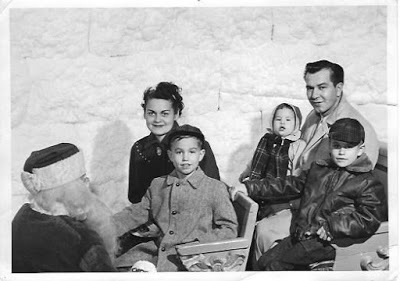 My family in 1957. I'm sitting next to my mother.
My family in 1957. I'm sitting next to my mother.
During the Christmas season, Santa's igloo sleigh ride in the basement was the big attraction. As far as I have been able to determine, the sleigh was manually pushed back and forth on a rail track. Jon Jahr remembers seeing the sleigh in the Muirhead's warehouse in the early 1970s. Jahr asked Mr. Muirhead if he might bring the sleigh out just for Christmas photos, but he was done with it by then. I wonder if the sleigh is waiting somewhere in Dearborn waiting to be rediscovered.
John died in 1983 at the age of eighty-three. Alberta operated the store by herself with the help of a dedicated band of loyal employees for seven more years. Then, she closed the popular store after forty-three years in business. Competition from shopping malls and Crowley's on Michigan Avenue off Outer Drive in particular cut into her business.
Alberta's story didn't end with the closing of her boutique department store. Mrs. Muirhead--as most people called her--became a model for philanthrophy. She believed in giving back to the Dearborn community who had supported her and her husband John, making their business a success. Alberta devoted her later life to Dearborn and its people.
Alberta Muirhead parlayed her charismatic personality and charitable spirit to become Dearborn's biggest benefactor and philantropist since the Ford family. For starters, she donated her three-level building to the Oakwood Health Care Foundation for their data-processing center. An avid believer in public education, Alberta became the namesake for Dearborn's Teacher of the Year award established in 1997. She supported both Henry Ford Community College and Rochester College giving generously to their scholarship funds to help needy and struggling students. Dearborn Public Schools awards an annual scholarship named after her.
In 2007, Alberta Muirhead established the Oakwood Healthcare Foundation with a $500,000 gift to support nursing education and advanced nursing degrees for Oakwood Healthcare employees. Many a nurse owes a debt of gratitude to the memory of Mrs. Muirhead. Her support was not limited to people. Alberta was a supporter of the Dearborn Animal Shelter and received their Big Heart Award in 2006.
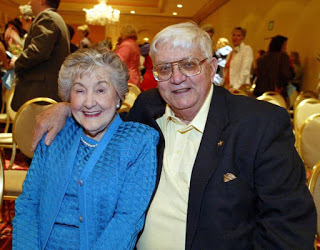
After the death of her husband, Alberta and Russ Gibb--of Grande Ballroom fame and Dearborn High School teacher--became friends. How and when they met is unclear, but Gibb was a deejay at WKNR-FM which was next door to the department store. They became lifelong friends and companions for nearly thirty years until Alberta's death on January 14, 2011 at the age of ninety-one. "Alberta put so many people through college," Gibb said. "She was a great, generous lady and I loved her dearly."
November 16, 2020
The Grande Ballroom--Detroit's Hard Rock Mecca
 Mural painted on plywood used to board up the Grande Ballroom.
Mural painted on plywood used to board up the Grande Ballroom.Detroit empresario Harry Weitzman was the financier and original owner of the Grande Ballroom located on the corner of Grand River Blvd and Joy Rd in the predominately Jewish Petosky-Otsego neighborhood on Detroit's Westside. Construction began in May 1928 on the multiuse, two-story building with basement space which opened that October. The architectual style was Art Deco with Spanish Colonial Revival elements. The building was not equipped with air conditioning, so the ballroom was surrounded on three sides by twenty-two Moorish arched windows for cross-ventilation during the hot summer months.
Retail shops occupied the first floor, the mezzenine, and the basement. The ballroom dance floor filled most of the second floor--one of the largest in the Midwest with a capacity for 1,837 dancers. The hardwood floor featured a "sprung" design built over subflooring and a lattice work of cork strips to allow the floor to cushion the dancers' steps, and whether by design or happy coincidence, the ballroom had fabulous acoustics.
The Grande Ballroom became a favorite playground for the surrounding Jewish neighborhood. One can imagine Purple Gang members dressed in fancy clothes, strolling into the dance hall checking out the local talent. From the 1930s until the end of World War II, the Grande featured jazz and big band music. After the war, the music business changed as prewar entertainment habits changed.
The jukebox and a burgeoning record industry turned many dancers into listeners. Youth in the1950s began hosting basement and garage record parties to the detriment of ballroom culture. Commercial radio and television did not help either.
The rise of teen dance television programs like Dick Clark's American Bandstand and Swinging Time with Robin Seymour helped record companies shift America's musical tastes from big bands and orchestras to smaller rock & roll bands and rhythm & blues groups that could lip synch their music and reach a huge, teenage audience. All the city's ballrooms fell on hard times. The Grande's dance floor was turned into a roller skating rink for a time and then a storage facility for mattresses.
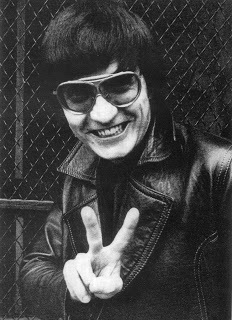 In 1966, WKNR deejay "Uncle" Russ Gibb cut a rent-to-buy deal with current owners, the Kleinmann family, for $700 a month. Gibb turned the boarded-up eyesore into a hard rock venue modeled after Bill Graham's San Francisco Fillmore Theater. The surrounding neighborhood and the outside of the Grande had seen better days and was in decline.
In 1966, WKNR deejay "Uncle" Russ Gibb cut a rent-to-buy deal with current owners, the Kleinmann family, for $700 a month. Gibb turned the boarded-up eyesore into a hard rock venue modeled after Bill Graham's San Francisco Fillmore Theater. The surrounding neighborhood and the outside of the Grande had seen better days and was in decline.Gibb asked other Detroit deejays to partner with him, but they said, "It will never work; that's a Black neighborhood." He reached out to John Sinclair, a key figure in the collaborative Detroit Artists' Workshop, which morphed into Trans-Love Energies Unlimited. Together, they made the Grande Ballroom a success. Where else could young people in Detroit go to see two local bands and two headliner groups for five dollars?
Russ Gibb wanted the Grande to be a place where bands were free to write and perform their own material and forge their own identities. He was not interested in cover bands or bar bands. To help create a psychedelic atmosphere, one of the largest strobe lights ever constructed was installed.
A large screen behind the bandstand displayed light shows created with vegetable oil, food coloring, and a piece of Saran Wrap manipulated in a clear glass bowl or plate projected onto the screen with a transparency projector. This low tech light show combined with the strobe light was unlike anything Detroit kids had ever experienced before. Pretty soon, the weekly gatherings of the tribe began to resemble the characters on the pages of Rob Crumb's Zap Comix.
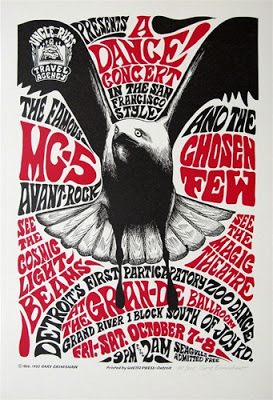 First Grande Ballroom handbill by Gary Grimshaw in October 1966.
First Grande Ballroom handbill by Gary Grimshaw in October 1966.If Crumb was the artist in residence for the Fillmore West in San Francisco, Gary Grimshaw and Carl Lundgren were the artists in residence for the The Grande Ballroom. Their original graphic art became famous and was featured in the Grande's weekly handbills which were produced in large numbers and widely distributed. Today, original Grande poster and handbill art attracts collectors, especially if it's signed by the artists or featured band members.
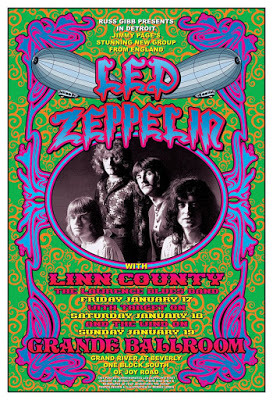 An example of Carl Lundgren's work.
An example of Carl Lundgren's work.Arguably, the Grande Ballroom is the birthplace of punk and hard rock music. They started with Detroit's local power bands like SRC, Frost, Iggy and the Stooges, The Amboy Dukes, Bob Seger and the Last Herd, and the Grande's house band The MC5. Then the San Francisco bands like Jefferson Airplane, The Grateful Dead, and Janis Joplin with Big Brother and the Holding Company started making Detroit appearances on their concert tours.
When emerging British rock groups heard about the Grande's rabid rock & roll scene, they made Detroit part of their tours--groups and performers like The Who, Led Zeppelin, Pink Floyd, Jeff Beck, Jethro Tull, Procol Harem, and Cream. To get a sense of how intense performances could be, listen to MC5s "Kick Out the Jams" or Savoy Brown's "A Step Further" albums which were recorded live at the Grande.
The Grande also hosted Black jazz and blues performers helping to expand their audiences. This drew in racially mixed crowds and endeared the Grande to the local community--performers like John Lee Hooker, B.B. King, John Coltrane, Howling Wolf, Taj Mahal, and Sun Ra were booked, as well as rock & roll legends Chuck Berry, Bo Diddley, and Jimi Hendrix.
Russ Gibb closed the Grande on New Year's Eve 1972 after six years of operation. The counter-culture and the record business had changed. Corporate suits realized they could make megabucks promoting these groups through much larger venues like auditoriums, university fieldhouses, and stadiums. One by one, the groups signed binding record contracts changing the performers and their performances, making the Grande's grassroots venue a victim of its own success.
Gibb returned to teaching and landed a job at Dearborn High School where he worked until retirement promoting media education. As the decades passed, the weather and vandals turned the dance hall into a ruin. Some efforts are being made to restore the roof of the building to make it weather tight.
***

Suffice it to say, the Grande's history takes more than a blog post to recount. There is an interesting book available on Amazon, named aptly enough The Grande Ballroom: Detroit's Rock 'N' Palace, by Leo Early.
An Emmy-winning documentary Louder Than Love--The Grande Ballroom was released in 2012. It tells the rock palace's story as told by many of the people who made musical history there. The 52 minute documentary is linked below.
November 15, 2020
Early Detroit River Speedboat Racing History
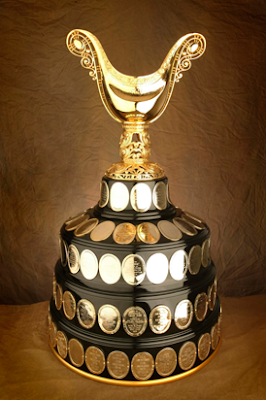 The Gold Cup--officially known as the American Power Boat Association (APBA) Challenge Cup--is the oldest continually-awarded trophy in all of motorsports. This huge trophy dates back to 1904 when the motorboat race was held in New York. In those early days, boats plowed through the water rather than skimming the surface. The first winning boat measured 59 feet with an 8.5 foot beam; its 110 hp Standard motor averaged 23 mph.
The Gold Cup--officially known as the American Power Boat Association (APBA) Challenge Cup--is the oldest continually-awarded trophy in all of motorsports. This huge trophy dates back to 1904 when the motorboat race was held in New York. In those early days, boats plowed through the water rather than skimming the surface. The first winning boat measured 59 feet with an 8.5 foot beam; its 110 hp Standard motor averaged 23 mph.In 1915, the community-owned Miss Detroit won the Gold Cup on Manhasset Bay, New York. On race day, Miss Detroit's pilot could not be found, so crew member Johnny Milot jumped into the cockpit at the last minute without any protective gear next to riding mechanic Jack Beebe. Milot took a pounding on the first turn and heaved up his guts, so Beebe took over and won the race. The Miss Detroit team earned the right to defend the Gold Cup in home waters.
The single-step hydroplane was powered by a 250 hp Sterling engine. The revolutionary hydroplane design gave the boat the ability to plane over the water's surface and break the 60 mph speed barrier. The decisive win spelled the end of the speedboat displacement era and the beginning of the hydroplane era.
Detroit, Michigan became the Boat Racing Capital of North America surplanting New York as the watersport's epicenter. The Detroit River track was 2.5 miles long for a 5 mile circuit. Beginning in 1917, industrialist Garfield (Gar) Wood became the sport's first superstar winning five consecutive Gold Cup victories. During the winter of 1921-1922, the APBA changed the Gold Cup rules to make racing more competitive and affordable because Wood's boats were unbeatable. Wood retired from Gold Cup racing.
Gar Wood also won the prestigious British Harmsworth Trophy nine times in international competition. In 1932, Wood piloted Miss America X --powered by four supercharged Packard V-12 engines producing 6,400 hp, setting a waterspeed record that went unbroken for over thirty years.

In addition to Gar Wood's unchallenged reign, I found a couple of other noteworthy Gold Cup races on the Detroit River. In the 1933 competition, Dodge Motor Company heir, Horace Dodge Jr. entered eight hydrofoils in the race. El Lagarto--also known as The Leaping Lizard of Lake George (New York)--left the Dodge boats in its wake.
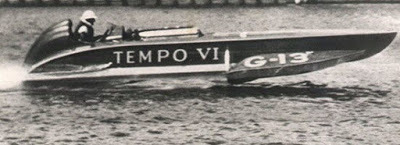 Due to gas rationing for War War II, the APBA suspended its Gold Cup competitions from 1941 through 1945. The race resumed in Detroit on Labor Day in 1946 to huge interest. Big Band leader Guy Lombardo piloted Tempo VI garnering lots of pre-race publicity for the sport. After a hard-fought race, Lombardo won a spectacular victory by breaking Gar Wood's average 70.412 mph lap record for the 30 mile race by 0.478 mph. Gar Wood was in the grandstands to see his twenty-six-year-old Gold Cup record broken by the bandleader.
Due to gas rationing for War War II, the APBA suspended its Gold Cup competitions from 1941 through 1945. The race resumed in Detroit on Labor Day in 1946 to huge interest. Big Band leader Guy Lombardo piloted Tempo VI garnering lots of pre-race publicity for the sport. After a hard-fought race, Lombardo won a spectacular victory by breaking Gar Wood's average 70.412 mph lap record for the 30 mile race by 0.478 mph. Gar Wood was in the grandstands to see his twenty-six-year-old Gold Cup record broken by the bandleader.



